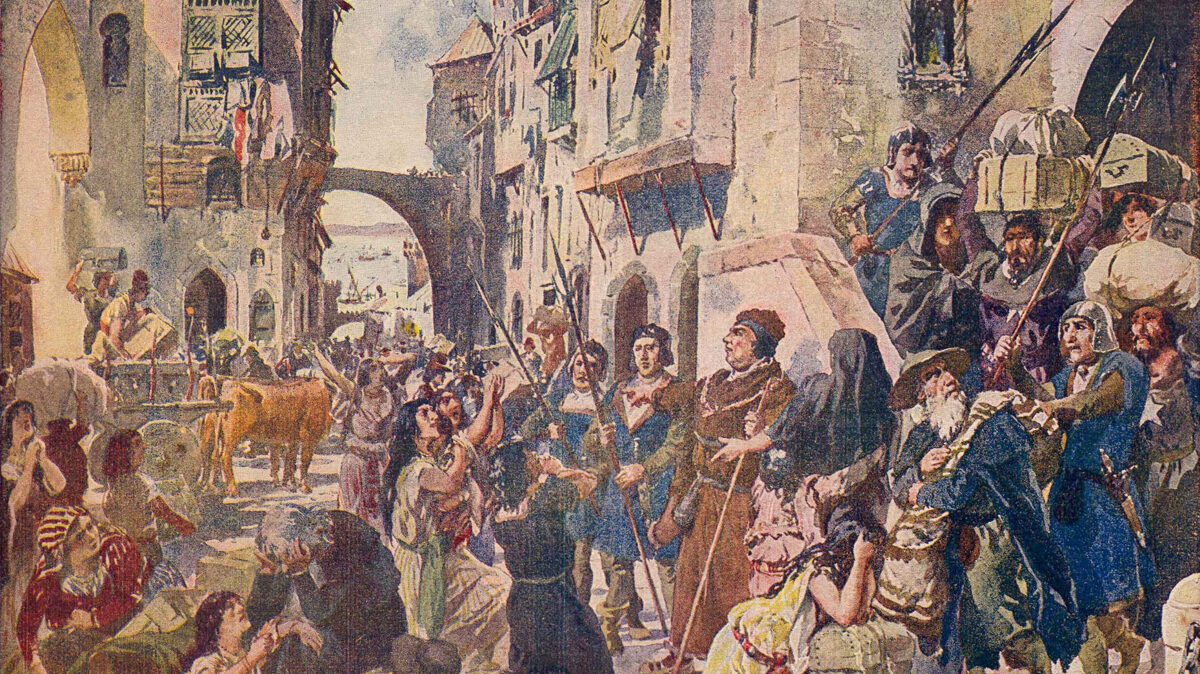THE SEPHARDIC
We use the term Sephardic to refer to the descendants of Jews expelled from the Iberian Peninsula (Portugal and Spain) at the end of the Middle Ages, who formed communities in various countries in Europe, the Eastern Mediterranean, and North Africa.
The expulsion of the Jews from Castilla and Aragon by the Catholic Monarchs in 1492 threw a contingent of close to one hundred thousand Jews out of these kingdoms, who went to settle in some parts of Europe (Italy, southern France or Portugal). in the kingdom of Morocco, or in the lands of the Eastern Mediterranean that belonged to the then thriving and extensive Ottoman Empire. In 1497 the Jews were expelled from the kingdom of Navarra.

Engraving about the expulsion of the Sephardic from Portugal at the end of the Middle Ages.
As a result of the marriage of King Manuel I of Portugal with the Infanta Isabel de Castilla, daughter of the Catholic Monarchs, in 1496 the expulsion of the Jews from Portugal was decreed, which in the end was not executed as such expulsion, but was materialized in a massive forced conversion in 1497. Many of the converts (cristãos novos or new Christians) kept the practice of their elders' religion hidden, which was possible largely because the Inquisition did not operate in Portugal until 1540.
These crypto-Jewish converts (often contemptuously called marranos) were, in turn, the seed of Sephardic communities in the Netherlands, England, Hamburg, Italian cities such as Ferrara or Ancona, or in the Portuguese, Spanish and Dutch colonies of America; throughout the sixteenth and seventeenth centuries.
Frequently, the process of emigration and formation of the communities of the Sephardic diaspora was complex and lasted years or even generations, and not only because of the conditions in which the trips were made at that time, but because it was frequent that an individual or a family roam from one country to another until finally settling down.
(Source: Sephardic website)
